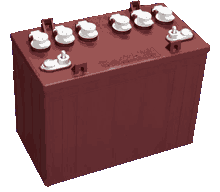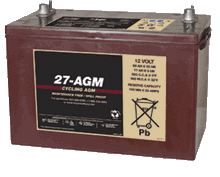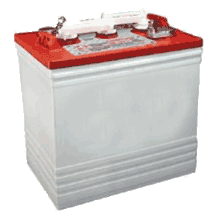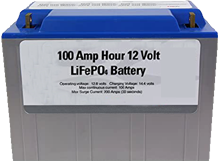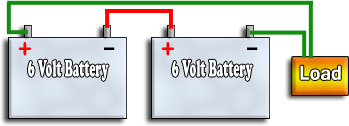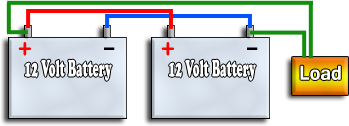Deep Cycle Batteries
Deep cycle batteries are the heart of any mobile power system and provide electrical storage for you to use any time you need it. There are various types of deep cycle batteries that will cater to your specific needs.
Lead Acid Deep Cycle
A lead acid deep cycle battery consists primarily of lead plates and acid mixed together in a series of cells which create a galvanic effect. This mixture creates an electrochemical reaction which can produce an electric current. This is what we typically call a lead acid Battery and are the most common batteries used in RVs. They come in 6 and 12 volt varieties that vary in size and reserve capacity, and must be ventilated to the outside air.
Gel Cells and AGM (Absorbed Glass Mat)
Other types of deep cycle batteries used in RVs and boats are Absorbed Glass Mat (AGM), and Gel-Cells. These types are more expensive than regular lead-acid batteries because they are sealed, which means they cannot spill battery acid when tipped over allowing the user to mount them horizonally, vertically, or even upside down! AGM and Gel batteries are ideal for situations where the batteries do not have adequate ventilation to the outside air.
Many RVers prefer the use of AGM and Gel due to their rugged sustainability in harsh conditions. AGM and Gel batteries are very heavy, and can handle extreme temperatures and vibration which is why they are a good choice for mobile applications.
Lithium Iron Phosphate (LiFePo4)
A new battery technology that is taking the RV world by storm are Lithium Iron Phosphate batteries, also referred to as LiFePO4. These batteries offer incredible reserve capacity and sustainability when compared to traditional lead-acid or Gel. They also offer a huge gain in performance when supplying large amounts of amperage draw, and will not suffer from voltage drop as much as the traditional types of batteries. While these batteries have proven to be very good power storage, they are very expensive. A 100 Amp Hour Lithium battery can cost up to $1200 Canadian dollars! While lithium technology is quickly gaining popularity among RV owners, not all solar controllers are compatible with them. Be sure to consider this when choosing a solar system to keep them charged.
|
